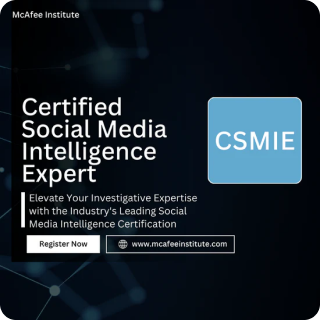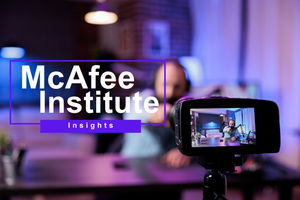Why Social Media Intelligence Matters in Modern Investigations
Socmint (Social Media Intelligence) is the collection and analysis of publicly available data from social media to support investigations, threat assessments, and strategic decisions. It’s a specialized branch of open-source intelligence focused on extracting actionable insights from platforms like Facebook, Twitter, Instagram, and LinkedIn.
Quick Definition:
- What it is: Techniques and tools to gather and analyze social media data.
- Who uses it: Law enforcement, intelligence agencies, corporate security, and fraud prevention teams.
- What it reveals: User profiles, connections, locations, activities, and behavioral patterns.
- Where data comes from: Public posts, comments, photos, videos, metadata, and group memberships.
- Why it matters: Provides real-time intelligence that traditional methods can't match.
With over 5.42 billion social media users generating a staggering volume of public information, every digital footprint represents a potential intelligence opportunity. However, effective SOCMINT isn't just about data collection; it's about knowing what to collect, how to analyze it legally and ethically, and when to act. This requires proper training and methodology.
I'm Joshua McAfee, and I've spent decades building intelligence programs for law enforcement and Fortune 100 companies. In my experience, socmint has become an essential skill for every modern analyst.

Deconstructing Social Media Intelligence: More Than Just "Stalking"
Effective socmint is not about aimlessly scrolling through social media feeds. It's a disciplined, systematic approach to gathering intelligence that requires training, ethical boundaries, and a clear understanding of legal limits. It transforms the massive volume of public information into actionable insights that protect communities and inform critical decisions.
What is SOCMINT?
Socmint is the methodical process of collecting, analyzing, and interpreting public data from social media platforms to produce intelligence. The process begins with data collection—gathering public posts, photos, and user interactions. This is followed by data analysis, where investigators identify patterns, connections, and behaviors. The ultimate goal is to produce actionable insights that provide investigative support or inform strategic decision-making, such as identifying a fraud network or locating a missing person.

Certified Social Media Intelligence Expert (CSMIE)
The Certified Social Media Intelligence Expert (CSMIE) program by McAfee Institute provides specialized training in social media and cyber investigations, preparing professionals for high-stakes roles in law enforcement, private investigation, and intelligence. With this program, you’ll gain critical skills to navigate social media platforms, gather intelligence, and conduct investigations that make a real-world impact.
SOCMINT vs. OSINT: Understanding the Difference
Socmint is a specialized branch of OSINT (Open-Source Intelligence). While OSINT covers all publicly available information (news, public records, etc.), socmint focuses exclusively on social media platforms. This specialization is crucial because social media data is unique, and users often have different privacy expectations for their content.
Operating within legal and ethical boundaries is fundamental. At McAfee Institute, our certified professionals understand that respecting privacy laws and platform terms of service protects both the investigation and the investigator. For a deeper dive into the broader field, check out our Understanding OSINT: A Comprehensive Guide.
The table below shows how socmint compares to related disciplines:
| Feature | OSINT (Open-Source Intelligence) | SOCMINT (Social Media Intelligence) | Social Listening | Social Analytics |
|---|---|---|---|---|
| Scope of Data | Broad: public records, news, academic papers, blogs, social media | Focused: Exclusively social media platforms and online communities | Narrow: Specific keywords, brands, hashtags on social media | Narrow: Performance data from owned social media accounts |
| Primary Goal | Comprehensive intelligence gathering from public sources | Actionable insights for investigations, threat assessment, strategic decisions | Monitor brand health, sentiment, customer feedback, trends | Evaluate campaign performance, audience engagement, ROI |
| Data Types | Text, images, videos, audio from any public source | User profiles, posts, interactions, metadata, network connections | Mentions, sentiment, discussions about specific topics | Likes, shares, comments, reach, impressions, follower growth |
| User Intent | Publicly available, often for broad consumption | Publicly shared, but sometimes with specific audience intent (e.g., groups) | Publicly shared, often expressing opinions or experiences | Data generated by audience interaction with owned content |
| Examples | News article analysis, government report review, social media post analysis | Identifying suspect connections, monitoring protest activity, fraud detection | Tracking mentions of "our brand" or "our product" | Analyzing engagement on our latest Instagram post |
Types of Data Collected Through Social Media Intelligence
The power of socmint lies in the variety of data available from public sources. Here’s what can be legally collected from publicly accessible content:
- Profile information: Usernames, display names, bios, public photos, and stated locations or employment history help establish identity.
- User interactions: Public posts, comments, likes, and shares reveal relationships, behaviors, and networks.
- Geolocation data: Location tags, check-ins, and background details in photos can pinpoint where someone was at a specific time.
- Timestamps: These are essential for building accurate timelines and corroborating other evidence.
- Metadata: Hidden information in photos and videos (EXIF data) can reveal details like the device used and GPS coordinates of where the image was taken.
It is critical to distinguish between public and private data. SOCMINT focuses on information users have chosen to share publicly. Accessing private messages or locked profiles requires legal authorization, such as a warrant or subpoena. Illegally obtained evidence can jeopardize an entire case and expose investigators to liability. At McAfee Institute, we train professionals to steer these boundaries with confidence.
Real-World Applications: How Social Media Intelligence Drives Investigations
The true power of socmint is evident in its real-world applications. It's a practical discipline that is reshaping how investigations are conducted and assets are protected.

Law Enforcement and Criminal Investigations
Modern police departments routinely use socmint. Publicly shared photos, videos, and posts serve as crucial evidence, placing suspects at a scene or revealing intent. Investigators can track criminal networks by analyzing interactions and connections, mapping out entire organizations more efficiently than with traditional surveillance. For missing persons cases, a tagged photo or check-in can provide a critical lead.
Event security also benefits. In 2021, investigators used online posts to detect a threat to bomb Amazon data centers, leading to an arrest and preventing a potential tragedy, as detailed in this Texas man charged after online threat case.
Business and Corporate Security Applications
Corporate security teams find socmint invaluable for managing risk.
- Fraud Prevention: Cross-referencing customer information with social media profiles helps identify red flags, such as a user's location being inconsistent with their stated address.
- Due Diligence: A subject's public social media presence can offer insights into their professional persona and judgment before a hiring decision or partnership.
- Brand Reputation Management: Monitoring brand mentions allows companies to quickly identify and respond to product issues or customer service complaints before they escalate.
- Executive Protection: Monitoring public posts can help security teams identify potential threats against high-profile individuals and take preventive action.
- Insider Threat Identification: Unusual online behavior, such as an employee posting grievances in extremist forums, can be an early indicator of an internal threat.
Understanding Public Sentiment and Trends
Beyond security, socmint offers a real-time view of public thought and feeling.
- Gauging Public Opinion: Governments and organizations use it to understand reactions to policies, products, and social causes.
- Crisis Monitoring: During natural disasters or public health emergencies, social media provides situational awareness, showing where help is needed and how misinformation is spreading.
- Identifying Narratives and Misinformation: Socmint helps spot emerging trends and track the spread of false narratives. This is crucial for countering disinformation campaigns that can influence elections and public health, making socmint what some experts call a Social Media As An Intelligence Goldmine for responding to information warfare.
The applications continue to expand, but the core function remains: changing public data into actionable intelligence.
The Investigator's Playbook: A Step-by-Step SOCMINT Process
Effective socmint requires a structured process, not just sophisticated tools. The intelligence lifecycle provides a proven framework for keeping investigations focused, efficient, and legally sound.

Essential Elements of a SOCMINT Investigation
A successful investigation follows a clear path:
- Planning and Direction: Define your objective. Are you tracking a suspect, investigating fraud, or monitoring threats? This determines which platforms to focus on and what keywords or "pivot points" (a name, email, or username) to use as starting points.
- Collection: Gather raw data from social media. This involves using pivot points to find profiles and relevant content. A key tool is the sock puppet account—a research account separate from your personal identity to protect operational security.
- Data Verification: Cross-reference all information to ensure you are investigating the right person and not following a false lead. Social media is rife with fake profiles and misleading data.
- Processing and Exploitation: Organize the raw data into a structured, usable format for analysis.
- Analysis and Production: This is where you identify patterns, connections, and anomalies. It requires careful manual attention to find information users forgot to hide, like revealing EXIF data in a photo.
- Dissemination: Deliver your findings in a clear, concise report or dashboard that provides actionable insights.
Throughout this process, evidence preservation is crucial. We train analysts to capture evidence in a forensically sound manner so it holds up in legal proceedings. For more techniques, see our guide on 5 Incredible OSINT Techniques to Supercharge Your Investigations in 2025.
Effective Tools for a SOCMINT Analyst
A mix of free and paid tools improves an analyst's capabilities.
- Free and Open-Source Tools: These are great for getting started. Toutatis on GitHub can extract public information from Instagram accounts. Telegram channels dedicated to OSINT offer real-time tips and tools. Simple browser extensions and search operators are also powerful for refining searches.
- Paid and Professional Tools: For larger investigations, these tools provide serious firepower. Maltego is the standard for graphical link analysis, revealing hidden connections. Hootsuite Listening and Talkwalker are robust platforms for monitoring public sentiment and tracking brand mentions across millions of sources, all while adhering to major privacy regulations.
Advanced Techniques in SOCMINT
As platforms evolve, so do our techniques.
- Network Analysis: Use tools like Maltego to visualize connections between individuals and groups, revealing influence networks and hidden relationships.
- Geofencing: Leverage geographical tags and EXIF data to establish movement patterns or map events in specific locations.
- Sentiment Analysis: AI-powered tools analyze massive volumes of text to determine emotional tone, providing insights into public opinion at scale.
- Image and Video Analysis: Go beyond EXIF data with reverse image searching to trace an image's origin, object detection to identify items in photos, and facial recognition where legally and ethically permissible.
Navigating the Gray: Legal and Ethical Boundaries in Social Media Intelligence
The power of socmint comes with serious responsibility. Navigating the gray area between publicly available information and personal privacy expectations is critical. Getting it wrong can violate laws, damage reputations, and compromise an entire investigation.

Key Legal and Regulatory Frameworks
The legal landscape for socmint is a complex patchwork of regulations. Professionals must understand these frameworks to operate legally.
- GDPR (General Data Protection Regulation): This EU law sets a global standard for data privacy. It requires consent and transparency when collecting personal data from EU citizens, even if it's publicly available.
- CCPA (California Consumer Privacy Act): This gives California residents rights over their personal information, including the right to know what data is collected and to request its deletion.
- PIPEDA (Personal Information Protection and Electronic Documents Act): This governs how Canadian organizations handle personal information, requiring consent for data collection.
Beyond these laws, each social media platform has Terms of Service that must be followed. Violating these terms can lead to account suspension. The complexity of jurisdictional challenges makes proper training essential.
Ethical Considerations and Common Pitfalls
Legal compliance is the minimum standard; ethics demand more. Just because you can collect information doesn't mean you should.
- Surveillance vs. Intelligence: We focus on gathering relevant, public information for specific, legitimate objectives, not indiscriminate monitoring.
- Confirmation Bias: A dangerous trap is looking only for information that confirms a pre-existing belief. Analysts must actively seek contradictory evidence and remain objective.
- Misinterpretation of Data: Sarcasm, jokes, and context are easily missed. Always verify information from multiple sources before drawing conclusions.
- Protecting Privacy: Even with public data, we must act responsibly. As Privacy International notes, the nature of social media data requires specific safeguards. We respect user privacy by avoiding unnecessary intrusion.
- Data Accuracy: The rise of deepfakes and AI-generated content means digital evidence can no longer be taken at face value. Analysts must be trained to verify the authenticity of digital content.
Socmint requires balancing effective intelligence gathering with respect for individual rights. Our certification programs instill a deep understanding of the legal and ethical principles that guide every investigation.
The Future of Social Media Intelligence
The socmint landscape is in constant motion. As platforms and user behaviors evolve, our methods must adapt to stay ahead of emerging threats and opportunities.
Artificial Intelligence (AI) and Machine Learning (ML) are revolutionizing socmint investigations. These technologies process vast datasets in seconds, spotting patterns invisible to the human eye. AI-powered sentiment analysis can gauge public mood, while ML algorithms can automatically detect suspicious behavior. This allows investigators to focus on interpretation and decision-making rather than manual data gathering.
Predictive analysis is the next frontier. By analyzing social media patterns, we are moving beyond understanding what happened to forecasting what might happen, such as predicting civil unrest or identifying early signs of radicalization.
Of course, this evolution brings challenges. New platforms emerge constantly, each with unique data structures. The most pressing challenge is the rise of deepfakes and sophisticated disinformation. AI-generated content is becoming increasingly convincing, making content verification more critical and difficult than ever. Future socmint professionals will need advanced skills in digital forensics to separate truth from fabrication.
As we explored in How AI is Transforming the Future of Investigations, these advances don't replace human judgment—they augment it. The future of socmint belongs to professionals who can blend cutting-edge technology with timeless investigative principles: curiosity, skepticism, and ethical integrity.
Frequently Asked Questions about Social Media Intelligence
I've been teaching socmint for years, and a few key questions always come up. Here are the answers to the three I hear most often.
Is SOCMINT legal for law enforcement?
Yes, but with important caveats. Law enforcement can legally collect and analyze any information users have made publicly available on social media. This includes public posts, photos, and profile information.
The line is drawn at private data. Accessing direct messages, content in private groups, or information behind privacy settings requires legal authorization, such as a warrant or subpoena. Understanding this distinction is critical, as getting it wrong can compromise an investigation. Our training emphasizes navigating regulations like GDPR, CCPA, and PIPEDA to ensure all actions are legal and ethical.
Can SOCMINT predict future events?
Socmint doesn't provide a crystal ball, but it offers powerful indicators and early warnings. By analyzing patterns across millions of posts, we can spot emerging trends, growing tensions in a community, or shifting public sentiment. Researchers have used these techniques to identify early signs of online radicalization and predict potential civil unrest.
The predictive power comes from connecting dots that aren't immediately visible. However, prediction is only as good as the analysis. It requires quality data, proper context, and experienced analysts who can interpret the information. Socmint provides foresight; human judgment turns it into actionable intelligence.
How do you start a career in social media intelligence?
The path into this field requires deliberate steps.
- Build Your Analytical Foundation: Start with broad OSINT principles, then focus on social media. Develop critical thinking skills to question information and spot patterns.
- Get Comfortable with the Tools: Begin with free resources like advanced search operators and open-source tools. Then, explore professional platforms like Maltego or Talkwalker to understand the landscape.
- Master the Legal and Ethical Boundaries: This is non-negotiable. Study data privacy laws like GDPR and CCPA, as well as platform Terms of Service.
- Get Practical Experience: Apply your skills through personal projects or internships. Real-world application turns theory into skill.
- Invest in Specialized Training and Certification: This is how many professionals accelerate their careers. Our Certified Social Media Intelligence Expert (CSMIE) program provides government-recognized certification with structured knowledge from field experts. It includes lifetime access to materials, live instructor support, and free updates for life. An employer-recognized credential like the CSMIE can be the key to landing your first intelligence role or advancing in your current one.
The demand for skilled socmint analysts is growing. With the right foundation and training, the opportunities are significant. For more on this, read our article on 10 Reasons Why OSINT Certifications Are Essential for Your Career.
Conclusion: Mastering SOCMINT for Your Career
We've covered how socmint is changing modern investigations. It's not just about data; it's about understanding human behavior, protecting communities, and making smarter decisions in a complex digital world. From preventing fraud to tracking criminal networks, socmint is an essential skill that requires professionals who understand both the tools and the immense responsibility that comes with them.
Anyone can scroll through social media, but a trained professional knows what to look for, how to verify it, and how to act on it ethically and legally. That is the key difference.
The digital landscape continues to evolve with deepfakes and complex privacy regulations. The professionals who thrive are those who commit to continuous learning. That’s why we built our programs at McAfee Institute. Our government-recognized and employer-trusted certifications are lifetime resources designed by experts with real-world experience.
When you become a Certified Social Media Intelligence Expert (CSMIE), you gain lifetime access to training, live instructor support, and free updates for life—no annual renewals or hidden fees.
The demand for qualified socmint professionals is growing. If you're ready to master this essential discipline, the intelligence community needs you. Explore our full range of programs at McAfee Institute, and let's build your future in intelligence together. For more on the value of certification, read our article on 10 Reasons Why OSINT Certifications Are Essential for Your Career.






Member discussion